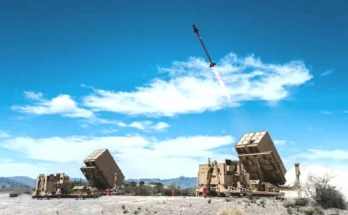
Boeing is officially out of Canada’s fighter jet competition. The company was offering its F/A-18E/F Super Hornet to replace the Royal Canadian Air Force’s CF-18 fleet. Canada plans to buy 88 aircraft.
Initial reports last week indicated that Boeing’s bid did not meet government requirements, but at the time it was unclear if that meant Boeing was out of the running entirely. That now appears to be the case, leaving only the Lockheed Martin F-35 and the Saab Gripen. It is unclear at this time what requirements Boeing failed to meet, but the decision may have been influenced by an economic impact clause stemming from an earlier trade dispute.
Boeing’s participation in the CF-18 competition has been a roller coaster. More than a decade ago, the Conservative government at the time announced plans to buy a fleet of 65 F-35s to replace the CF-18s, but that plan came under fire due to high costs. The program was put on hold so that other options could be examined. The F-35 debate became politicized, with now Prime Minister Justin Trudeau promising during his campaign that Canada would not buy the F-35 and that a competition would be launched to find a new fighter. At the time, it seemed a Boeing Super Hornet bid would have the edge. Transitioning from the Hornet to the Super Hornet would be fairly straightforward in terms of infrastructure and training, and concerns about interoperability with U.S. forces would be minimized.
In summer 2016, the government also announced a desire to purchase a number of Super Hornets as interim fighters until a full replacement for the Hornets could be found. The aircraft were to fill a newly expressed capability gap that arose from a defense policy change. Critics claimed the move would give the Super Hornet an advantage during the fighter competition, possibly leading to the interim aircraft ultimately being integrated as a permanent part of a future Super Hornet fleet.
Canada was in discussions with Boeing to procure 18 new F/A-18E/F Super Hornets under a potential $5.2 billion deal, but the sale fell through when an unrelated trade dispute erupted after Boeing claimed the Canadian government was subsidizing Bombardier’s CSeries commercial aircraft. Ottawa subsequently abandoned the Super Hornet deal and instead decided buy secondhand F/A-18A/B Hornets from Australia to meet its interim fighter requirement. Canada also amended its fighter solicitation to penalize any bidder that would harm the country’s economic interests, a not-so-veiled shot at Boeing.
Furthermore, the Liberal government eventually softened its stance against the F-35, and even modified program requirements to keep the aircraft in the competition. The original requirements called for guaranteed economic benefits, which Lockheed Martin could not offer. F-35 consortium members are able to compete for contracts, but are not guaranteed domestic work.

Boeing has been heavily marketing its industrial benefits package, offering CAD61 billion in economic benefits through its partnerships with CAE, L3Harris Technologies, Peraton Canada, Raytheon Canada Ltd, and GE Canada Aviation. However, economic benefits make up only 20 percent of the bid evaluation. Another 20 percent of the evaluation is driven by cost, while the remaining 60 percent is based on technical merit.
While it’s unclear if the economic impact clause was the swaying factor in Boeing’s exit, it may not have helped the company’s case. Boeing said it would review the government’s decision and then determine its path forward.
With Lockheed Martin and Saab remaining, the F-35 is generally considered the frontrunner. While it appears Canada doesn’t have interoperability concerns with the Gripen, the F-35 is a closer match for NATO and NORAD missions. Canada is also neighbor to the largest F-35 customer in the world, which could generate near-term production efficiencies or facilitate long-term maintenance when spare parts are in need. F-35 flyaway costs have declined since Canada first canceled its original F-35 procurement plan, so the government could make the argument that the aircraft is a more affordable option now then it was before. Of course, Ottawa has also had to pour more money into its CF-18s to keep them flying due to delays in finding a replacement. Sustainment costs could also be an issue. U.S. lawmakers in particular have been voicing concerns about high sustainment costs, an issue Lockheed Martin is trying to address.

The big question is whether the lower cost of the Gripen is enough to sway the decision, but again, costs only account for 20 percent of the overall evaluation. Canada will now decide whether to move forward with one of the remaining platforms or seek additional information from the contractors before selecting a winner. A decision is expected in 2022, followed by aircraft deliveries starting as soon as 2025.
Shaun's deep-rooted interest in military equipment continues in his role as a senior defense analyst with a focus on the United States. He played an integral role in the development of Forecast International's U.S. Defense Budget Forecast, an interactive online product that tracks Pentagon acquisition programs throughout the congressional budget process. As editor of International Military Markets – North America, Shaun has cultivated a deep understanding of the vast defense markets in the United States and Canada. He is a regular contributor to Forecast International's Defense & Security Monitor blog and has co-authored white papers on global defense spending and various military programs.




